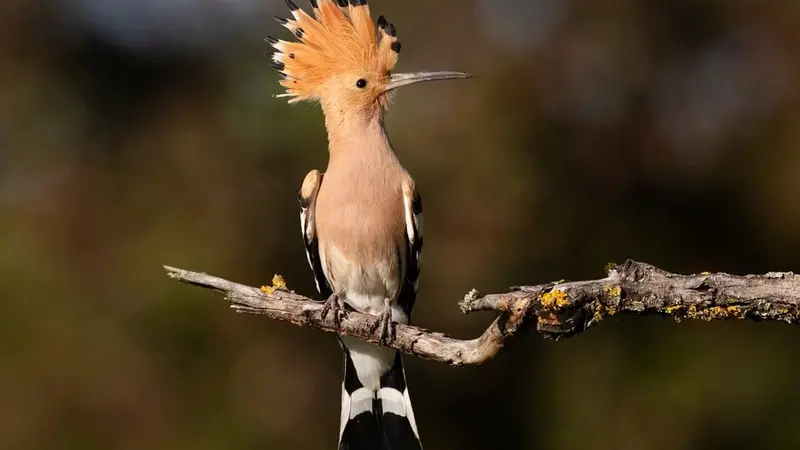The crested woodland bird is a captivating subject for bird enthusiasts. This bird, known for its distinct crest, thrives in forested habitats. Its unique appearance and behavior make it a fascinating species to study. In this article, we will let you know about crested woodland bird nyt.
The Crested Woodland Bird Nyt delves into the intriguing world of these birds. Known for their vibrant plumage and distinctive crests, crested woodland birds play a crucial role in forest ecosystems. The Crested Woodland Bird Nyt explores their habitats, highlighting the dense forests they call home. Readers will learn about their unique behaviors and diverse diets. Conservation efforts are essential, as the Crested Woodland Bird Nyt emphasizes, to protect these birds from threats like habitat loss and pollution. Discover why these birds are a vital part of our natural world.
Habitat and Distribution
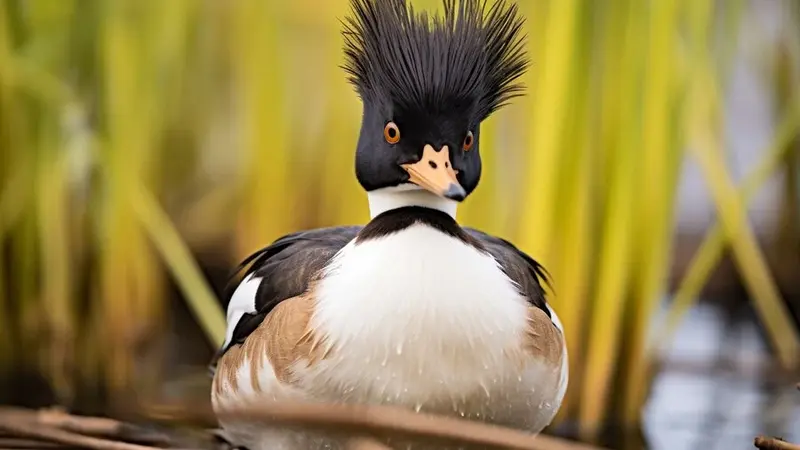
Crested woodland birds thrive in diverse, forested habitats. They prefer dense forests and woodlands, which provide ample cover and food sources. These birds are most commonly found in temperate regions but can adapt to various climates.
Preferred Habitats
Crested woodland birds favor areas with thick tree cover. They thrive in old-growth forests and dense woodlands. These habitats offer safety from predators and an abundance of food. Trees provide nesting sites and shelter.
Global Distribution
Crested woodland birds have a wide distribution across the globe. They are present in North America, Europe, and parts of Asia. Each region hosts different species, each adapted to local conditions.
- North America: In North America, crested woodland birds are often found in forests stretching from Canada to the southern United States. They thrive in both deciduous and coniferous forests.
- Europe: In Europe, these birds inhabit woodlands from the UK to Eastern Europe. They prefer areas with mature trees and thick underbrush.
- Asia: In Asia, crested woodland birds are seen in countries like China and Japan. They thrive in both temperate and subtropical forests.
Adaptation to Climates
Crested woodland birds are adaptable. They can survive in different climates, though they prefer temperate zones. They can endure cold winters in northern regions and warmer climates in southern areas.
Seasonal Movements
These birds exhibit seasonal movements based on food availability. Some species migrate to warmer areas during winter. This migration ensures they have access to food year-round. Other species may remain in one area throughout the year if food is plentiful.
Importance of Habitat Conservation
The preservation of forest habitats is crucial for the survival of crested woodland birds. Deforestation and urbanization pose significant threats. Conservation efforts focus on protecting existing forests and restoring degraded ones. Creating protected areas and nature reserves helps ensure these birds have safe habitats.
Observing Crested Woodland Birds in Their Natural Habitat
For birdwatchers, observing crested woodland birds in their natural habitat is a rewarding experience. Visiting nature reserves and protected forests offers the best opportunities. Early mornings and late afternoons are ideal times for birdwatching. Listening to their distinctive calls can help locate these elusive birds.
By understanding the habitats and distribution of crested woodland birds, we can better appreciate their ecological role. Efforts to conserve their environments are essential for maintaining the biodiversity of forest ecosystems.
Physical Characteristics
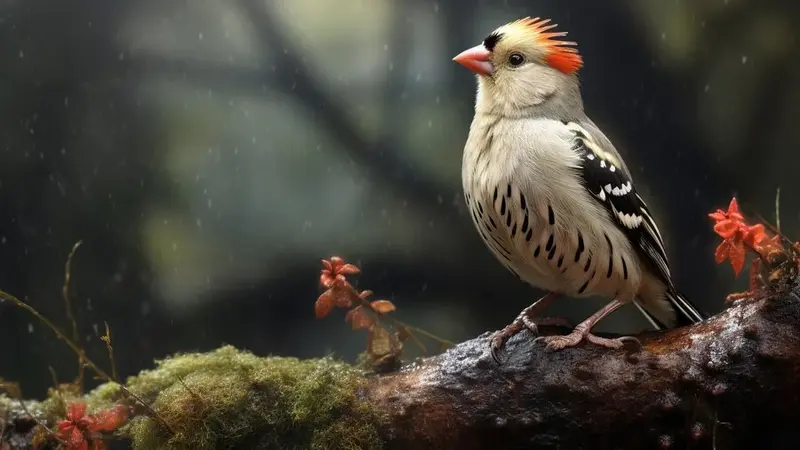
Crested woodland birds are distinguished by their striking features and vibrant plumage. These traits not only make them fascinating to observe but also serve important functions in their natural habitats.
Distinctive Crest
The most notable feature of crested woodland birds is their crest. This prominent tuft of feathers on top of their heads varies in size and color among species. The crest can be raised or lowered depending on the bird’s mood and activity, playing a role in communication and courtship displays.
- Function: The crest can signal different states, such as alertness or aggression. During mating seasons, the crest is often displayed more prominently to attract mates.
- Variation: Colors range from bright yellows and reds to more subdued browns and blacks. The size and shape of the crest can also differ significantly between species.
Vibrant Plumage
Crested woodland birds are known for their colorful plumage. Their feathers often display intricate patterns and vibrant hues, which help them blend into the forest environment and evade predators.
- Coloration: Many species exhibit a combination of bright and neutral colors. This coloration can provide camouflage among the leaves and branches.
- Patterns: Some birds have spots or stripes that break up their outline, making them less visible to predators.
Strong, Curved Beaks
These birds possess strong, curved beaks suited for their omnivorous diet. The shape and strength of the beak allow them to forage effectively, crack open seeds, hunt insects, and consume fruits.
- Adaptation: The beak’s design is ideal for accessing a variety of food sources. It enables the birds to exploit different dietary opportunities throughout the year.
- Versatility: Their beaks can handle tough seeds and hard-shelled insects, making them versatile foragers.
Agile Bodies
Crested woodland birds have agile, streamlined bodies that facilitate quick and nimble movement through the forest canopy. Their strong, flexible wings enable them to maneuver easily among trees.
- Flight: These birds are adept fliers, capable of rapid, darting movements. Their flight patterns often involve short bursts of speed and quick turns.
- Perching: They have strong, clawed feet that allow them to grip branches securely. This is essential for navigating their arboreal habitats.
Sexual Dimorphism
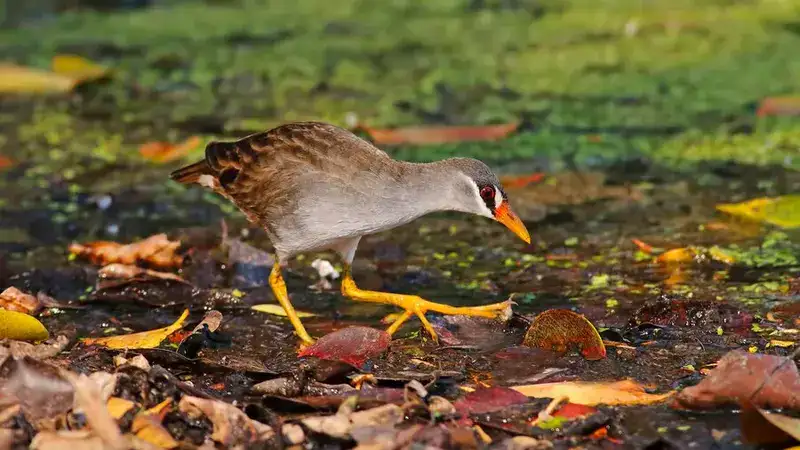
In some species of crested woodland birds, males and females exhibit different physical characteristics, a phenomenon known as sexual dimorphism. Males often have more vibrant colors and larger crests compared to females.
- Mating Displays: The more colorful males use their bright plumage and large crests to attract females during the breeding season.
- Camouflage: Females, often more subdued in coloration, benefit from better camouflage while nesting and caring for young.
Juvenile Characteristics
Juvenile crested woodland birds usually have duller plumage compared to adults. This helps them blend into their surroundings and avoid predators. As they mature, their colors and crests develop, reaching full prominence in adulthood.
Adaptations for Survival
The physical characteristics of crested woodland birds are crucial for their survival. Their distinctive crests, vibrant plumage, strong beaks, and agile bodies enable them to thrive in complex forest environments. These features not only aid in foraging and mating but also provide essential camouflage and communication tools.
By appreciating the unique physical traits of crested woodland birds, we can gain deeper insight into their behaviors and ecological roles. Protecting their habitats ensures that these remarkable birds continue to flourish in their natural environments.
Behavior and Diet
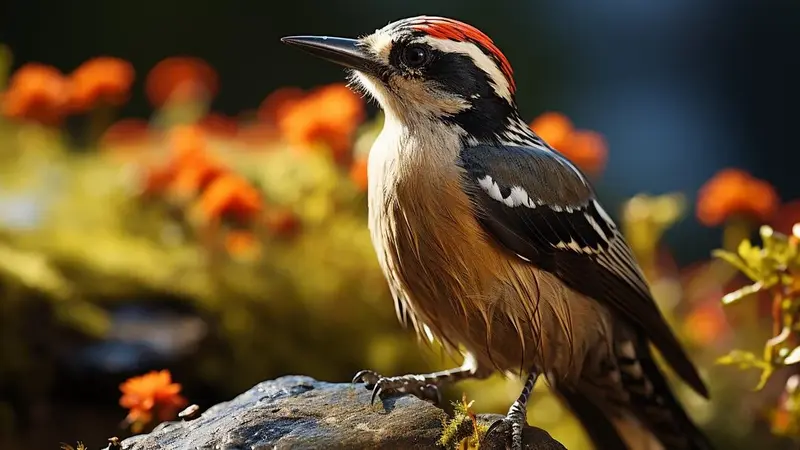
Crested woodland birds exhibit fascinating behaviors and have diverse dietary habits. These characteristics are vital for their survival and play a significant role in their ecological niche.
Daily Activities
Crested woodland birds are diurnal, meaning they are active during the day. They spend most of their time in the tree canopy, foraging for food and socializing with other birds.
- Foraging: These birds are constantly on the move, searching for food. They use their strong beaks to crack open seeds and catch insects.
- Social Behavior: Many species are social and can be seen in small flocks. They communicate with each other through various calls and songs.
Communication
Crested woodland birds have a rich repertoire of vocalizations. These sounds serve multiple purposes, including attracting mates, warning of predators, and maintaining flock cohesion.
- Songs and Calls: Males often sing elaborate songs to attract females during the breeding season. Alarm calls alert the flock to danger.
- Visual Displays: The birds also use their crests and body movements to communicate. Raising their crests can signal aggression or excitement.
Nesting Habits
These birds are meticulous nest builders. They construct their nests high in trees, using materials like twigs, leaves, and moss. Both male and female birds participate in nest building and caring for the young.
- Location: Nests are usually hidden among dense foliage to protect from predators.
- Construction: The nests are sturdy and well-insulated, providing a safe environment for the eggs and chicks.
Breeding Season
The breeding season for crested woodland birds typically occurs in spring. During this time, males display their crests and sing to attract females. Once paired, the birds work together to raise their offspring.
- Courtship: Males perform elaborate courtship displays, including singing and showing off their crests.
- Parental Care: Both parents take turns incubating the eggs and feeding the chicks once they hatch.
Diet and Feeding Behavior
Crested woodland birds are omnivores, with a diet that varies seasonally. They eat a mix of insects, fruits, seeds, and sometimes small invertebrates. This varied diet helps them thrive in different environments.
- Insects: During the spring and summer, insects are abundant and provide a rich protein source. The birds catch insects on the wing or forage among leaves and bark.
- Fruits and Seeds: In autumn and winter, fruits and seeds become the primary food source. The birds use their strong beaks to crack open hard seeds and eat the nutritious contents.
- Seasonal Variations: Their diet changes with the seasons, allowing them to take advantage of the most available and nutritious food sources throughout the year.
Feeding Techniques
Crested woodland birds use various techniques to obtain food. Their strong, curved beaks are highly effective tools for their diverse diet.
- Gleaning: They often glean insects from leaves and branches. This involves picking insects off the surfaces with their beaks.
- Hawking: Some species catch insects in mid-air, a method known as hawking. This requires agility and precise flight control.
- Cracking Seeds: Their beaks are also used to crack open seeds. They hold the seed with their feet and use their beaks to break it open.
Role in the Ecosystem
Crested woodland birds play a crucial role in their ecosystems. By controlling insect populations, they help maintain a balance in the forest. Their foraging behavior also aids in seed dispersal, promoting plant growth and forest health.
- Insect Control: By feeding on insects, these birds help reduce the number of pests that can damage trees and other plants.
- Seed Dispersal: As they eat fruits and discard seeds, they help in the propagation of various plant species.
Breeding and Nesting
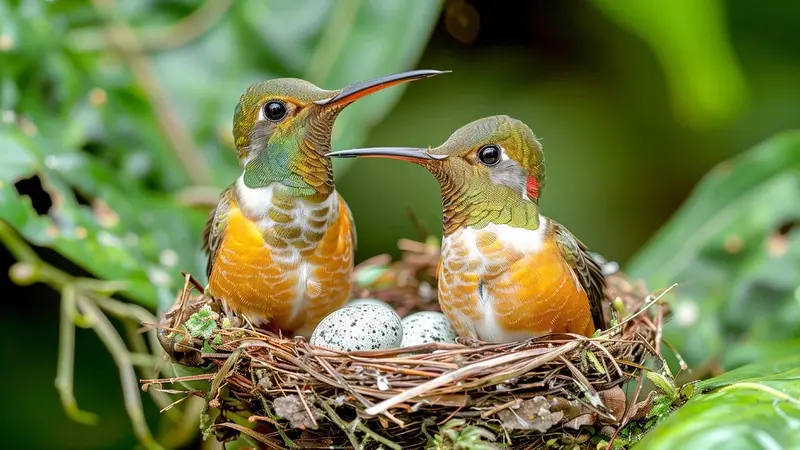
Crested woodland birds exhibit fascinating breeding and nesting behaviors that are crucial for the continuation of their species. These behaviors are often elaborate and involve significant cooperation between male and female birds.
Breeding Season
The breeding season for crested woodland birds typically occurs in spring. This timing ensures that the young have abundant food resources during their early development.
- Seasonal Timing: Spring is chosen for breeding to align with peak food availability.
- Courtship Displays: Males perform courtship displays to attract females. These displays often include singing, showing off their vibrant plumage, and raising their crests.
Courtship and Mating
During the breeding season, males put on elaborate displays to attract females. These displays are essential for mate selection and establishing strong pair bonds.
- Singing: Males sing complex songs to attract females and ward off other males.
- Visual Displays: They raise their crests, puff out their chests, and perform intricate dances.
- Territorial Behavior: Males may become more territorial, defending their chosen nesting sites from rivals.
Nest Building
Once a pair forms, they begin the task of nest building. Both male and female birds participate in constructing the nest, ensuring it is safe and secure for their offspring.
- Location: Nests are built high in trees, often well-hidden among leaves and branches.
- Materials: The birds use a variety of materials, including twigs, leaves, moss, and sometimes feathers, to create a sturdy and insulated nest.
- Construction Process: Nest building can take several days to weeks, with both birds contributing to gathering materials and assembling the nest.
Egg Laying and Incubation
After the nest is completed, the female lays eggs. The number of eggs varies by species but generally ranges from two to six.
- Egg Characteristics: The eggs are usually small and may have various markings or colors depending on the species.
- Incubation: Both parents take turns incubating the eggs to maintain a constant temperature. This period lasts about two to three weeks.
- Parental Roles: While one parent incubates, the other may forage for food or protect the nest from predators.
Raising the Chicks
Once the eggs hatch, both parents are involved in feeding and protecting the chicks. The young birds are altricial, meaning they are born blind, featherless, and helpless.
- Feeding: Parents bring a variety of food to the nest, including insects, fruits, and seeds. The high-protein diet helps the chicks grow rapidly.
- Protection: Both parents are vigilant in protecting the nest from predators. They may use alarm calls and aggressive displays to ward off threats.
- Growth and Development: The chicks grow quickly, developing feathers and learning to fly within a few weeks. During this time, they are dependent on their parents for food and protection.
Fledging and Independence
After a few weeks, the chicks are ready to leave the nest, a process known as fledging. This stage is critical as the young birds begin to explore their surroundings and learn essential survival skills.
- Fledging: The young birds leave the nest but continue to rely on their parents for food and guidance.
- Learning to Forage: Parents teach the fledglings how to find food and avoid predators.
- Gradual Independence: Over several weeks, the young birds become more independent, eventually leaving the parental territory to establish their own.
Importance of Breeding and Nesting Behaviors
The breeding and nesting behaviors of crested woodland birds are vital for the survival of their species. These behaviors ensure that the young are born in a safe environment and receive the care they need to develop into healthy adults.
- Species Continuation: Successful breeding and nesting are crucial for the continuation of the species.
- Genetic Diversity: Courtship displays and mate selection contribute to genetic diversity within the population.
- Ecosystem Balance: By raising their young successfully, these birds contribute to maintaining the balance of their forest ecosystems.
Importance in Ecosystems
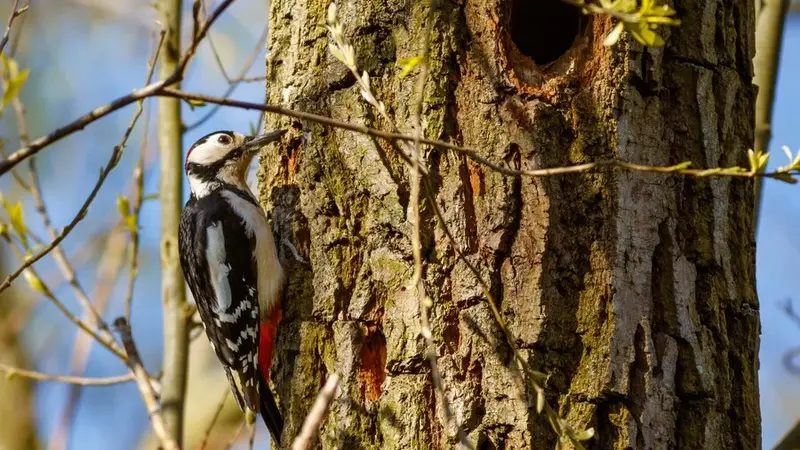
Crested woodland birds play a crucial role in maintaining the health and balance of forest ecosystems. Their activities and interactions with other species contribute significantly to ecological stability and biodiversity.
Insect Control
One of the primary ecological roles of crested woodland birds is controlling insect populations. These birds feed on a variety of insects, helping to keep pest numbers in check.
- Pest Management: By consuming large quantities of insects, crested woodland birds help prevent overpopulation of pests that could damage trees and other vegetation.
- Natural Balance: Their feeding habits contribute to a balanced ecosystem by controlling insect populations naturally.
Seed Dispersal
Crested woodland birds are vital agents of seed dispersal. As they forage for fruits, they consume seeds, which are later excreted in different locations, promoting plant diversity and forest regeneration.
- Forest Regeneration: By dispersing seeds, these birds aid in the growth of new plants and trees, which is essential for forest regeneration.
- Biodiversity: Seed dispersal by birds contributes to greater plant species diversity, which supports a variety of other wildlife.
Pollination
In addition to seed dispersal, some crested woodland birds contribute to pollination. As they move from flower to flower feeding on nectar, they inadvertently transfer pollen, facilitating plant reproduction.
- Pollinator Role: While not as prominent as insects, birds that feed on nectar also help in pollinating flowers, ensuring the production of fruits and seeds.
- Plant Reproduction: This activity supports the reproduction of flowering plants, contributing to the overall health of the ecosystem.
Habitat Creation
The nesting behavior of crested woodland birds contributes to habitat creation. Their nests provide microhabitats for various small organisms and insects, adding to the ecological complexity of forests.
- Microhabitats: The nests of these birds offer shelter and breeding sites for other small creatures, enhancing habitat diversity.
- Ecosystem Complexity: This complexity supports a wide range of species, contributing to a robust and resilient ecosystem.
Prey and Predator Dynamics
Crested woodland birds are integral to the food web. They serve as both predators (of insects) and prey (for larger animals), maintaining the balance within their ecosystems.
- Predatory Role: As predators of insects, they help control pest populations and maintain the health of their habitats.
- Prey Role: As prey for larger birds, mammals, and reptiles, they are a critical food source, supporting the survival of these predators.
Indicating Environmental Health
The presence and health of crested woodland bird populations are indicators of environmental quality. A thriving bird population often signifies a healthy ecosystem, while declines can indicate ecological problems.
- Environmental Indicators: Healthy bird populations suggest a balanced ecosystem with adequate food and habitat.
- Early Warning: A decline in bird numbers can signal environmental issues such as habitat loss, pollution, or climate change impacts.
Conservation and Protection
Understanding the importance of crested woodland birds in ecosystems underscores the need for conservation efforts. Protecting their habitats and ensuring their survival benefits the entire ecosystem.
- Habitat Preservation: Efforts to preserve and restore forests directly support the survival of these birds.
- Conservation Programs: Initiatives that focus on protecting bird species and their habitats help maintain ecological balance and biodiversity. Visit World Explore Magazine for more information.
Promoting Awareness
Educating the public about the ecological roles of crested woodland birds can foster greater appreciation and support for conservation efforts. Awareness campaigns can highlight the importance of these birds in maintaining healthy ecosystems.
- Public Education: Informing people about the benefits these birds bring to ecosystems can inspire conservation action.
- Community Involvement: Engaging local communities in bird conservation projects can lead to more effective and sustained efforts.
Threats and Conservation
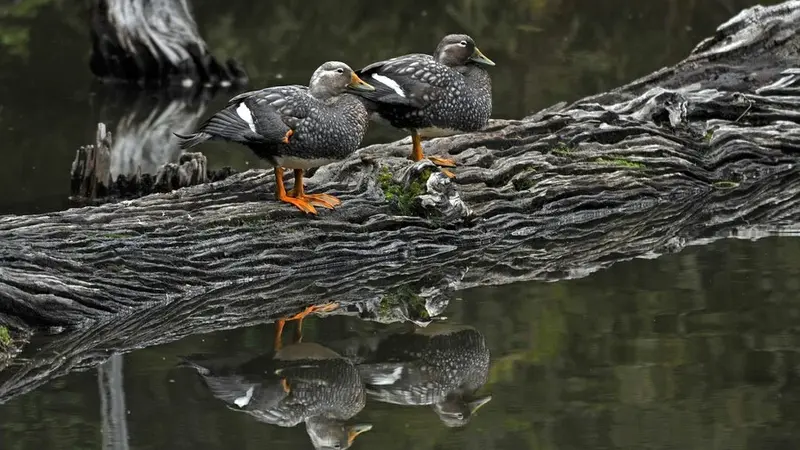
Crested woodland birds face numerous threats that endanger their populations and habitats. Understanding these threats is crucial for implementing effective conservation strategies to ensure their survival.
Major Threats
Several key threats impact crested woodland birds, leading to population declines and habitat loss.
- Habitat Loss
- Deforestation: Logging and land conversion for agriculture or urban development reduce available habitats for these birds.
- Urbanization: Expanding cities encroach on forest areas, fragmenting habitats and limiting resources for wildlife.
- Climate Change: Altered weather patterns and temperatures affect breeding, migration, and food availability.
- Pollution
- Chemical Pesticides: Use of pesticides in agriculture can poison birds directly or reduce insect populations, their primary food source.
- Air and Water Pollution: Industrial emissions and runoff pollute the environments where these birds live and breed, affecting their health and food supply.
- Invasive Species
- Predation: Non-native predators like cats and rats can significantly reduce bird populations by preying on eggs and chicks.
- Competition: Invasive bird species can outcompete native crested woodland birds for resources, leading to declines in native populations.
- Hunting and Trapping
- Poaching: In some regions, birds are hunted for their feathers or captured for the pet trade, further threatening their populations.
Conservation Efforts
To combat these threats, various conservation strategies are being implemented to protect crested woodland birds and their habitats.
- Habitat Protection
- Protected Areas: Establishing nature reserves and national parks helps safeguard critical habitats from deforestation and urbanization.
- Forest Restoration: Replanting trees and restoring degraded forests provide new habitats and support biodiversity.
- Legislation and Policies
- Environmental Laws: Enforcing laws that protect wildlife and regulate land use helps reduce habitat destruction and pollution.
- International Agreements: Global cooperation through treaties like the Convention on Biological Diversity (CBD) promotes coordinated conservation efforts.
- Research and Monitoring
- Population Surveys: Regular monitoring of bird populations helps track changes and identify areas needing intervention.
- Ecological Studies: Research on bird behavior, breeding, and habitat use informs conservation strategies and management plans.
- Community Involvement
- Education and Awareness: Public education campaigns raise awareness about the importance of conserving crested woodland birds and their habitats.
- Local Participation: Engaging local communities in conservation projects fosters stewardship and sustainable practices.
- Mitigating Pollution
- Reducing Pesticide Use: Promoting integrated pest management and organic farming reduces the reliance on harmful chemicals.
- Clean Energy Initiatives: Transitioning to renewable energy sources helps reduce air and water pollution impacting bird habitats.
- Controlling Invasive Species
- Predator Management: Implementing measures to control invasive predators protects eggs and chicks from being preyed upon.
- Habitat Restoration: Removing invasive plant species and restoring native vegetation improves habitat quality for crested woodland birds.
Success Stories
There are several success stories where conservation efforts have significantly improved the prospects for crested woodland birds.
- Reforestation Projects
- Costa Rica: Large-scale reforestation projects have restored habitats for many bird species, including crested woodland birds, leading to population recoveries.
- India: Community-led afforestation efforts have created new habitats, enhancing biodiversity and supporting bird conservation.
- Protected Areas
- North America: The establishment of bird sanctuaries and wildlife refuges has provided safe havens for crested woodland birds, protecting them from habitat loss and hunting.
- Europe: Designating special protected areas under the EU Birds Directive has helped conserve critical habitats for numerous bird species.
- Public Awareness Campaigns
- Australia: Public education initiatives have successfully reduced the use of harmful pesticides, benefiting both birds and the broader ecosystem.
- Africa: Community-based conservation programs have empowered local people to protect bird habitats and participate in sustainable land management.
Observing Crested Woodland Birds
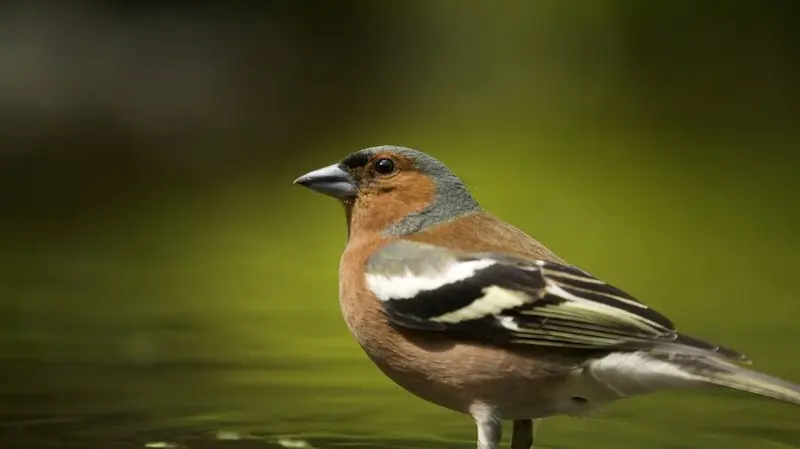
Birdwatching is a popular and rewarding activity that allows enthusiasts to connect with nature. Observing crested woodland birds offers a unique opportunity to witness the beauty and behavior of these remarkable creatures in their natural habitat.
Best Locations for Birdwatching
Crested woodland birds can be found in various forested regions around the world. To increase your chances of spotting these birds, visit locations known for their rich biodiversity and protected natural environments.
- Nature Reserves and National Parks: These protected areas provide ideal habitats for crested woodland birds, free from human disturbances.
- North America: Great Smoky Mountains National Park, Adirondack Park
- Europe: Black Forest (Germany), Pyrenees National Park (France)
- Asia: Emei Shan (China), Nikko National Park (Japan)
- Old-Growth Forests: Ancient, undisturbed forests offer abundant resources and shelter for these birds.
- Canada: Pacific Rim National Park Reserve
- Russia: Belovezhskaya Pushcha National Park
- Local Woodlands: Smaller, regional forests can also be excellent spots for birdwatching.
- UK: New Forest, Sherwood Forest
- USA: Shenandoah National Park, Redwood National and State Parks
Best Times to Observe
The timing of your birdwatching efforts can significantly impact your success in observing crested woodland birds.
- Early Morning: Birds are most active during the early morning hours, making it the best time to observe them.
- Late Afternoon: Another peak activity period is late afternoon, just before sunset.
- Breeding Season: Spring is an excellent time for birdwatching, as birds are more vocal and visible during courtship and nesting.
Birdwatching Tips
Maximize your birdwatching experience with these practical tips.
- Be Quiet and Patient: Move slowly and quietly to avoid startling the birds. Patience is key to observing natural behaviors.
- Use Binoculars: High-quality binoculars enhance your ability to see birds up close without disturbing them.
- Wear Camouflage: Neutral, earth-toned clothing helps you blend into the environment, making birds less likely to notice your presence.
- Bring a Field Guide: A bird field guide specific to the region can help you identify different species and learn about their habits.
- Stay Hydrated and Prepared: Carry water, snacks, and appropriate gear for the weather to ensure a comfortable birdwatching experience.
Identifying Crested Woodland Birds
Recognizing crested woodland birds involves paying attention to key physical and behavioral characteristics.
- Crest: Look for the distinctive crest on top of the bird’s head, which can be raised or lowered.
- Plumage: Note the bird’s coloration and patterns. Many crested woodland birds have vibrant and intricate plumage.
- Behavior: Observe their feeding and social behaviors. These birds are often seen foraging in the canopy and interacting with other birds.
- Calls and Songs: Listen for unique vocalizations. Each species has its own set of calls and songs, which can aid in identification.
Ethical Birdwatching Practices
Ensure that your birdwatching activities are ethical and do not harm the birds or their habitats.
- Respect Wildlife: Keep a respectful distance and avoid disturbing the birds, especially during breeding season.
- Follow Local Regulations: Adhere to guidelines and rules set by parks and reserves to protect wildlife and habitats.
- Leave No Trace: Carry out all trash and avoid damaging vegetation or nesting sites.
- Report Rare Sightings: If you spot rare or endangered species, report your sightings to local wildlife authorities to aid conservation efforts.
Photography Tips for Birdwatchers
Capturing photos of crested woodland birds can be a rewarding aspect of birdwatching.
- Use a Telephoto Lens: A telephoto lens allows you to take close-up shots without approaching the birds.
- Shoot in Natural Light: Early morning and late afternoon light provide the best conditions for bird photography.
- Focus on the Eyes: A sharp focus on the bird’s eyes enhances the impact of your photos.
- Be Patient: Wait for the right moment to capture natural behaviors and interesting poses.
Fun Facts about Crested Woodland Birds
Crested woodland birds are not only fascinating due to their physical characteristics and behaviors but also for their unique and intriguing traits. Here are some fun facts that highlight their distinctiveness and add to their charm.
Mimicry Abilities
- Mimicking Sounds: Some species of crested woodland birds have the remarkable ability to mimic sounds. They can imitate other bird calls, animal noises, and even human-made sounds. This talent helps them in communication and can sometimes confuse predators.
Crest Dynamics
- Expressive Crests: The crest of a crested woodland bird is more than just a decorative feature. These birds can raise and lower their crests to express emotions such as excitement, aggression, or curiosity. The movement of the crest is an important part of their communication.
Unique Nesting Habits
- Nest Decorations: Some crested woodland birds decorate their nests with colorful objects such as flowers, feathers, and even bits of plastic. These decorations may attract mates or serve to camouflage the nest.
Acrobatic Flight Patterns
- Agile Flyers: These birds are known for their acrobatic flight patterns. They can perform rapid turns, swoops, and dives with impressive agility. This ability helps them evade predators and catch insects mid-air.
Varied Diet
- Seasonal Diet Changes: Crested woodland birds adjust their diet based on the season. Insects are the primary food source in spring and summer, while fruits and seeds dominate their diet in autumn and winter. This adaptability ensures they have a steady food supply throughout the year.
Social Structures
- Flocking Behavior: Many crested woodland birds are social and form small flocks, especially outside the breeding season. Flocking provides them with safety in numbers, better foraging opportunities, and social interaction.
Long Lifespan
- Longevity: Some species of crested woodland birds have surprisingly long lifespans for their size. In the wild, they can live for over a decade, and in captivity, they can live even longer. Their longevity is often due to their adaptable nature and diverse diet.
Vibrant Plumage
- Colorful Feathers: The vibrant plumage of crested woodland birds is not just for show. The bright colors can serve as a deterrent to predators by signaling that the bird may be toxic or unpalatable. Additionally, their colorful feathers play a crucial role in attracting mates during the breeding season.
Ecological Role
- Ecosystem Engineers: By foraging for insects, dispersing seeds, and pollinating flowers, crested woodland birds play a significant role in maintaining the health and diversity of forest ecosystems. Their presence indicates a well-balanced environment.
Adaptability
- Survivors in Urban Areas: While they prefer dense forests, some crested woodland birds have adapted to urban environments. They can be found in city parks and gardens, demonstrating their remarkable ability to thrive in diverse habitats.
Conclusion
Crested woodland birds are captivating and vital components of our forest ecosystems. Their distinctive physical characteristics, including vibrant plumage and expressive crests, make them a joy to observe. These birds play essential roles in their habitats, from controlling insect populations to aiding in seed dispersal and pollination. Their behaviors, such as acrobatic flight patterns and mimicry abilities, add to their charm and complexity. I hope you will be very happy after reading about Crested Woodland Bird Nyt.
The Crested Woodland Bird Nyt provides an in-depth look at these fascinating birds. Their vibrant plumage and distinctive crests make them stand out in forest ecosystems. The Crested Woodland Bird Nyt highlights their preferred habitats, focusing on dense, lush forests. It also explores their unique behaviors and varied diets. Conservation is crucial, and the Crested Woodland Bird Nyt emphasizes efforts to protect them from threats like deforestation and climate change. Understanding these birds is key to appreciating their role in maintaining ecological balance.
Understanding and appreciating crested woodland birds enriches our connection with nature and highlights the importance of preserving these remarkable creatures and their habitats. By fostering a deeper appreciation for these birds, we can support efforts to protect them, ensuring that future generations can also experience their beauty and ecological significance.
